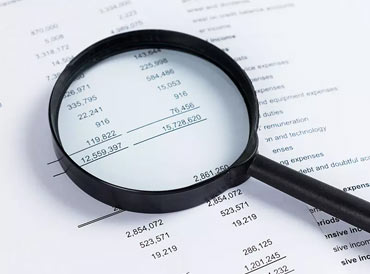If you are thinking about investing in a company, reviewing its balance sheet is a must because it reflects what the company owns in terms of assets and owes in terms of liabilities. The balance sheet and the income and cash flow statements comprise the company’s financial statements and provide a clear picture of how well the company is performing. Whether you are a shareholder or a potential investor, you must understand how the balance sheet works and how to analyse it to determine a company’s financial position. A particularly dense section of numbers and tables can be found in your company’s annual report. Your balance sheet is a statement to report your company’s financial health at a specific time. Accountants and business owners must be able to analyse balance sheet and act on them to avoid adverse business outcomes.
In college and university life, students have to submit financial accounting assignments. But every student cannot comprehend and analyse balance sheet and other financial statements. Students often look for assignment helpers to get assistance in assignment submission. Consult a reliable financial accounting assignment help service to get online writing assistance. Understanding how to read and analyse balance sheet is an essential financial accounting skill to have whether you are a business owner, employee, or investor. Here’s everything you need to know about the balance sheet, including what it is, what information it contains, why they are so important, and how to analyse balance sheet.
About Balance Sheet
A balance sheet is a financial document that communicates the exact value of a company or organisation; its book value. The balance sheet accomplishes this by listing and tallying all of a company’s assets, liabilities, and owners’ equity as of a specific date known as the reporting date. A balance sheet is typically prepared and distributed quarterly or monthly, depending on the frequency of reporting required by law or company policy.
A balance sheet summarises a company at a specific point in time. It is a snapshot of a company’s financial position, containing assets, liabilities, and equity. Balance sheets serve two distinct functions depending on who is reviewing them. Furthermore, a balance sheet provides insight into whether a company is succeeding or failing when reviewed internally by a business leader, key stakeholder, or employee. Based on this data, an internal audience can adjust policies and approaches, doubling down on successes, correcting failures, and pivoting toward new opportunities.
A balance sheet is intended to provide insight into what resources are available to a business and how they were financed when reviewed externally by someone interested in the company. Based on this information, potential investors can decide whether or not to invest in a company. Similarly, the information in a balance sheet can help calculate important metrics such as liquidity, profitability, and debt-to-equity ratio.
How to Analyse Balance Sheet?

After creating a balance sheet for your company, you can run simple calculations to analyse the balance sheet. You can calculate liquidity and leverage ratios using data from your balance sheet. These ratios help the company analyse its current financial position, where it stands, how many assets are there, and how many liabilities are compared to assets.
These financial ratios convert raw financial data from the balance sheet into information that will assist you in managing your business and making sound decisions. Financial ratio analysis is critical because it is one method loan officers use to assess potential borrowers’ creditworthiness. Later, in this blog, you will get insights into the financial ratios necessary to evaluate the company’s performance.
A Balance Sheet Analysis
The examination of a company’s assets, liabilities, and owner’s capital by various stakeholders to determine the correct financial position of the business at a given point in time are known as balance sheet analysis. The balance sheet analysis outlines the most commonly used by investors and financial analysts to analyse a company. It is a comprehensive analysis of balance-sheet items at various time intervals, quarterly or annual. It is used by shareholders, investors, and institutions to understand the company’s exact financial position. The transactions are recorded in different accounts under assets and liabilities on the balance sheet. The balance sheet always works according to the accounting equation, in which total assets should always be equal to liabilities and equity.
A balance sheet is a statement of financial analysis that evaluates the business’s operational efficiency. To analyse the balance sheet, accountants can compute ratios that show a company’s liquidity, efficiency, and financial structure. There are several balance sheet metrics, including liquidity, leverage, and operational efficiency.
The following are the most important liquidity ratios for a business to analyse balance sheet and the company’s current performance:
- The Current Ratio
- Quick Ratio
- Net Working Capital
The most important leverage ratios are:
- Debt to Equity Ratio
- Debt to Capital Ratio
- Interest Coverage
- Debt to EBITDA
- Fixed Charge Coverage Ratio
The following are the primary operating efficiency ratios to analyse balance sheet and the company’s performance:
- Inventory Turnover
- Accounts Receivable Days
- Accounts Payable Days
- Total Asset Turnover
- Net Asset Turnover
Why Does a Business Need to Analyse Balance Sheet?

It’s always important for businesses to analyse balance sheet. Financial statement analysis examines financial information found on financial statements to make informed business decisions. Financial information, such as the income statement, statement of retained earnings, balance sheet, and statement of cash flows, can be analysed. This analysis’s findings can help internal and external stakeholders make better decisions and provide a company with valuable information on overall performance and specific areas for improvement. This blog aims to provide information about how to analyse balance sheet. So throughout this blog, we will be discussing how to analyse balance sheet and the financial ratios that help businesses evaluate their performance. The company’s balance sheet analysis can assist them with budgeting, determining where to cut costs, how to increase revenues, and determining future capital investment opportunities.
The balance sheet is also a condensed version of a company’s account balances. It essentially tells investors what a company owns (assets), what it owes (liabilities), and how much investors have invested (equity). The balance sheet data can be used to calculate financial ratios that provide investors with an overall picture of the company. Some businesses have a debt-based financial structure, while others have an equity-based financial structure. The analysis’s ratios should be interpreted in the company’s context, its industry, and how it compares to its competitors. Hence, when considering financial analysis results, a company must understand that the data produced must be compared to others in the industry and close competitors. The company should also consider its past performance and its relation to current and future performance expectations.
How to Write a Financial Analysis? Few Writing Tips for Students
We have discussed how to analyse balance sheet and why it is significant for businesses to analyse balance sheet. Now onwards, we will discuss writing tips essential for financial accounting students about how they can compose their finance assignments.
Want to know how to write a financial analysis? Well! A financial analysis paper examines a company’s financial statements to determine its overall health and liquidity position. Unlike stock performance, which only summarises the various aspects of a company’s financial performance, the analysis paper elaborates on all areas, including pertinent information.
Are you pursuing a business degree or a finance-related course? If so, you should read our blog on how to write a financial analysis paper carefully. This blog will teach you the fundamentals of writing a successful financial analysis paper. Not just students, even as a professional, you will be required to write and present financial analysis papers to management or investors, especially if you become an equities researcher or investment analyst. Therefore, it is critical to learn and understand the format and analytical techniques to be used in the paper.
Financial Analysis Writing Tips

Writing a detailed financial analysis of a company is critical because it is one of the tools that help decide whether or not to invest in the business. It is important to note that there is no one way to write a financial analysis, and presentation styles will always differ. However, it is important to include the critical components in any financial analysis you prepare. Here are the writing tips that students need to follow when preparing for their financial accounting assignments.
Executive Summary
It should be noted that this is the section of the paper that contains the most important research from financial analysis in a concise, easy-to-read format. The summary condenses the information presented in the entire report, including the implications those data have for the industry and the company. In most cases, this section contains a brief summary of the firm’s mission, expected outlook, current performance, and history. The section also includes an overview of the company’s industry, competition, and market conditions.
Financial Statements
Another financial analysis writing tip is to incorporate financial statements. A financial core component is the collection of a company’s financial declarations. The balance sheet, equity statement, income statement, and cash flow statement are all part of the financial statement. The balance sheet’s job is to show the firm’s liabilities, property allocation, and each shareholder’s equity. We have already discussed earlier how you can analyse balance sheet.
A company’s income, expenses, and profit or loss will be detailed in its income statements. On the other hand, the investment statement will show all changes in shareholder equity. The cash flow statements will explain where the company got its money and how it spent it.
Industry Analysis
Because no business exists in a vacuum, the financial analysis should include an examination of the firm’s industry. The report will include a detailed comparison of its financial health to its competitors. It will also include information about its market share and prominence in the industry. These factors help investors determine whether the form is competitive in its industry and could be a profitable investment.
Financial Ratios
A financial ratio reveals the firm’s liquidity, debt amount, and efficiency. The current liquidity ratio is the percentage of a company’s current assets to current liabilities. On the other hand, the debt ratio is the ratio of the firm’s total debt to total equity. It should be noted that the return on equity ratio compares a company’s income to its shareholders’ equity. Divide the current market price by the after-tax profits per share to get the price to earnings ratio.
Few Other Helpful Writing Tips for Financial Accounting Students
- Include the basics of financial accounting in your paper.
- Include the business overview.
- The investment thesis can include a fundamental analysis of financial statements such as sales and profit growth trends, cash flow generation strength, debt level, and company liquidity.
- The essential part of any financial analysis is determining an independent value for the stock and comparing it to its current market price.
Get Financial Accounting Assignment Help Online from Professional Academic Writers
Need help with a financial accounting assignment? Suppose you cannot understand financial accounting concepts and statements of financial analysis. In that case, you need to look for professional academic help as many online credible academic writing websites offer help to students. With online assistance, you can perform well in your academic career and can get praised by your professor. Also, these websites help students understand the subjects and make them capable of composing their papers themselves. The extensive knowledge and industry experience of academic writing service providers benefit students in terms of their overall academic grades. So, if you need any writing assistance in finance, seek financial accounting assignment help online from a genuine academic writing website.
Conclusion
How to analyse a balance sheet and why it is essential to analyse it; these questions often come to students’ minds. Well! The answer is simple: to analyse balance sheet, firstly, you need to understand the components of the balance sheet, i.e. assets, liabilities, and equities. To evaluate a company’s performance and where it stands, it is essential to analyse balance sheet. Earlier in this blog, we discussed the balance sheet analysis and the financial ratios necessary to evaluate the company’s current position in terms of assets and liabilities. Often, students find it tedious to complete their financial accounting assignments and seek help from expert writers to get financial accounting assignment help.
